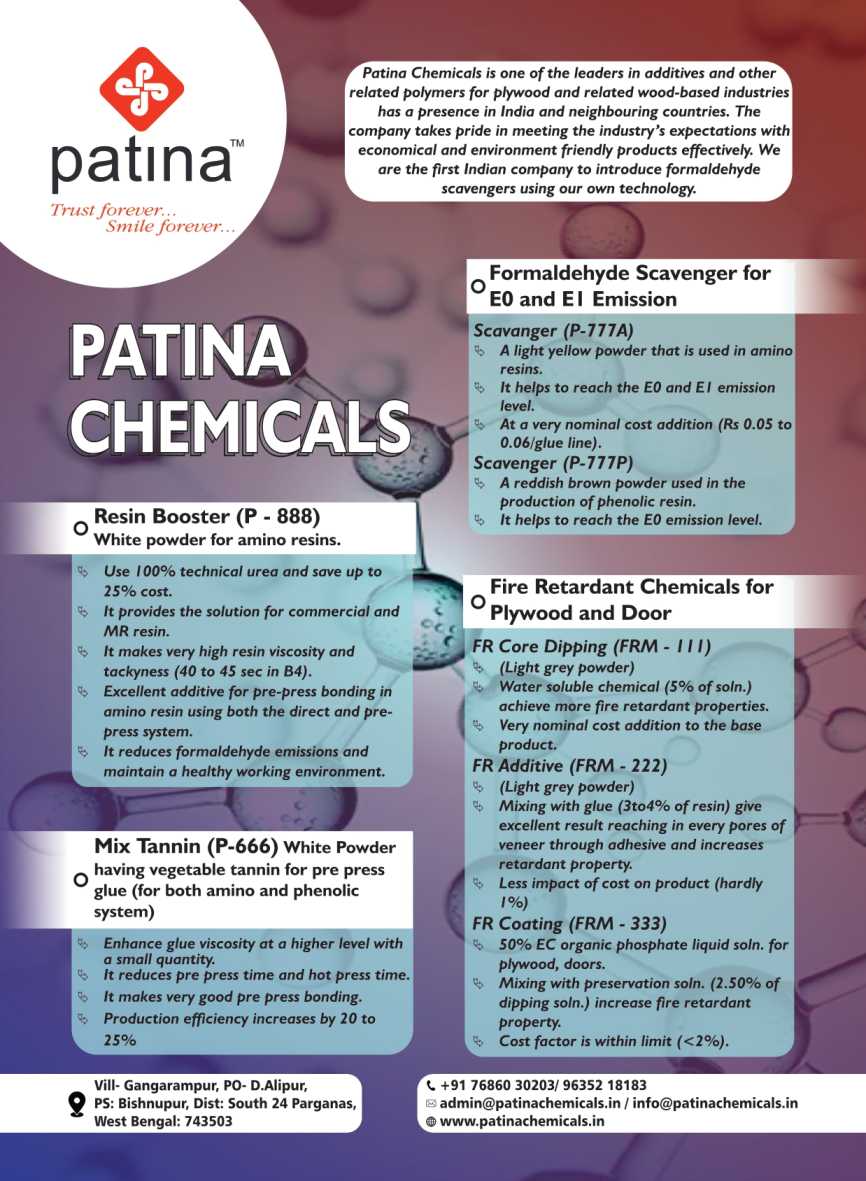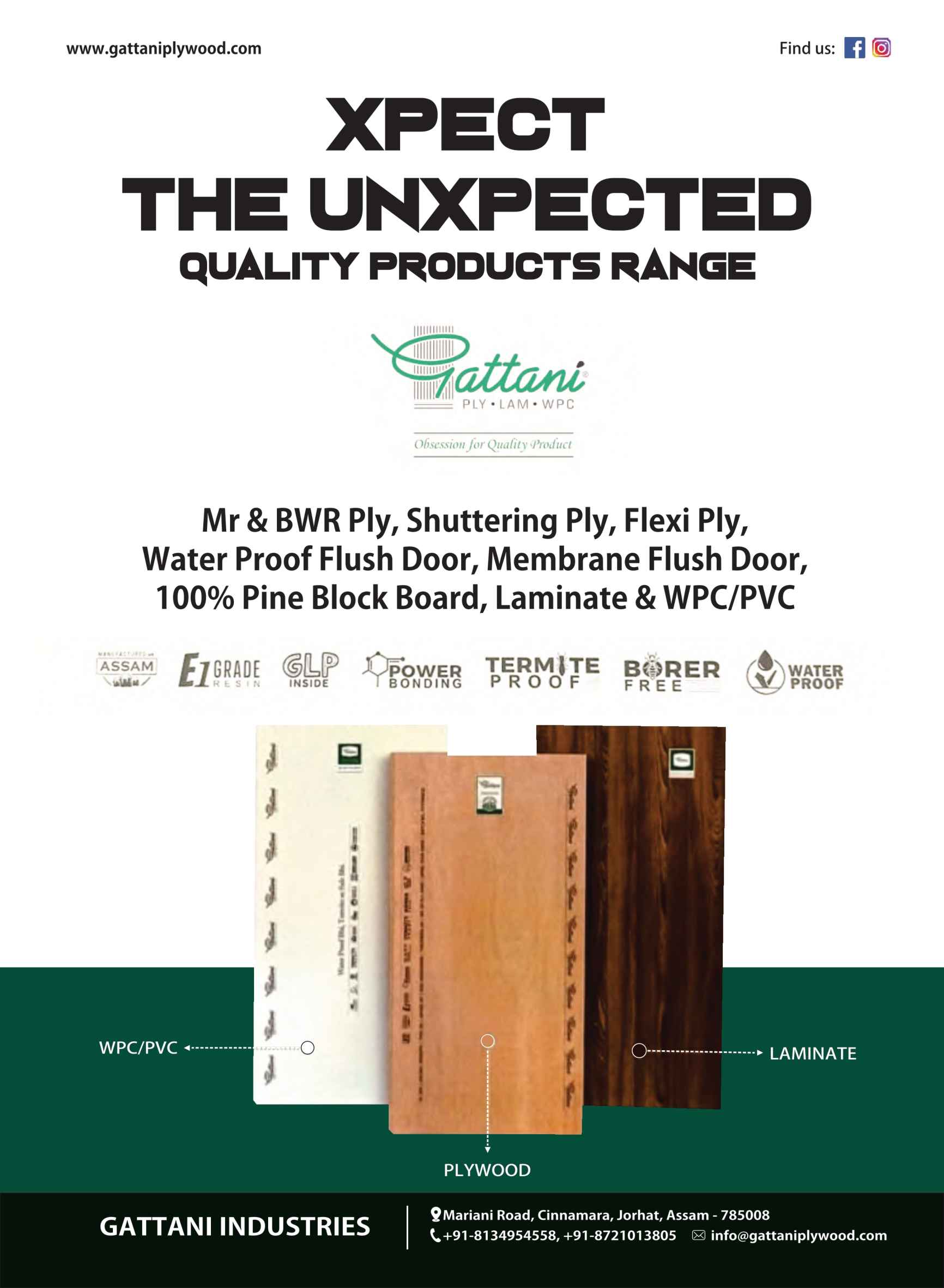
Agroforestry and ToF (Trees Outside Forests) Potential in supporting India’s Roadmap towards Carbon Neutral Economy by 2070
- April 8, 2022
- 0
India’s Commitments led by Hon’ble Prime Minister Sh Narendra Modi during CoP26 of UNFCC (UN Framework Convention on Climate Change) at Glasgow, United Kingdom in 2021 incorporated five nectar elements of ‘Panchamrit‘,to address Climate Change related challenges. Promotion of Agroforestry and Trees Outside Forests have to play a pivotal role in meeting commitments related to; Reduction of at least one billion tonnes of total projected emissions between now and 2030, Reduction of the country’s carbon intensity to less than 45%, Achieving net-zero emissions target by 2070. Union Budget-2022 emphasis on Agroforestry as one of the four interventions. It also reflects the seriousness of visionary leadership through shaping of “Climate Action” roadmap towards meeting NDC targets of having additional 2.5 to 3 billion tonnes of Carbon Sequestration by 2030 and other National and International Goals related to Biodiversity Conservation, Land Degradation Neutrality(LDN), Sustainable Development Goals (SDGs) underConvention on Biodiversity (CBD), UN Convention to Combat Desertification (UNCCD)and other conventions. Enhancement of India’s pledge under Bonn Challenge -Landscape Restoration to 26 mha from 21 mha by 2030 during UNCCD CoP-14, held in India in 2019 by Hon’ble Prime Minister Sh Narendra Modi is the largest pledge by any Country. The potential of Agroforestry and Trees Outside Forests (ToF) needs to be harnessed optimally in meeting these commitments and goals. Agroforestry also enhances provision of ecosystem services, especially carbon sequestration, and increased inclusive economic opportunities. Agroforestry and TOFs also alleviate some pressure on natural forests by meeting fuelwood and wood product needs.
Agroforestry and ToF include trees growing on private land and farms; in urban areas; along linear infrastructure such as roads, railway lines, canals; plantations in and around industrial areas; shelterbelts; and in land belonging to government and other institutions; etc. TOFs on farms and other private lands provide income and sustenance for farmers from timber, fuelwood, fruits and other products. These TOFs play a critical role in the economy of many developing countries, including India. Additionally, TOFs are important in promoting cultural, social, and ecological functions that are important to human livelihoods. TOFs also sequester carbon, stabilize soil, filter water and air, regulate water flow, and perform other ecosystem services. When planted along roads and canals, in institutional areas or within urban landscapes, TOFs provide shade to cool microclimates, absorb some air pollutants, beautify green spaces, provide nesting and habitat for birds and other small animals, help to regulate stormwater, and contribute to human well-being.
Haryana State has demonstrated how a State deficient in forest and natural resources scarce with only about 3.5 % area under Forests and more than 80 % area under Agriculture can support the Nation’s food security and also wood security. This is mainly due to promotion of Agroforestry friendly policies and encouraging plantation campaigns for planting Trees Outside Forests. Investor and Industry friendly climate for wood based industries, sourcing wood mainly from farmlands and facilitating availability of high productivity and short rotation seedlings of Eucalyptus and Poplar to farmers have played a pivotal role in making Yamunanagar District the Plywood Capital of the Country. Clonal Eucalyptus and Poplar seedlings have short harvesting period of 4-6 years. Farmers’ income is supplemented through farmwood based production along with agricultural crops. Moreover, Agroforestry also ensures economic security in supplementing income from trees in years of crop failures due to drought, frost, extreme temperatures, rainfall or other reasons. Strong formal and informal market linkages, marketing agencies and value chains linking producers, industries, consumers and end users have evolved. There are about 350 plywood units in the State. Yamunanagar Wood Market supports more than 50 % of the India’s Plywood Production. It is estimated that wood worth INR 2500to 3000 crores sourced from farmlands is traded in Yamunanagar and nearby region. Finished and value added wood products worth about INR6500 to 8000 crores in the form of plywood, particle board, poles etc have played a vital role in shaping the economy of the region. It is estimated, that about 0.1 million persons are annually employed in activities related to wood based harvesting, marketing and production.
Haryana State under the dynamic and visionary leadership of Hon’ble Chief Minister Sh Manohar Lal Khattar has undertaken a number of initiatives in supporting National level Commitments. “Oxy- Van” scheme launched in 2021 aims to have “Mini Forests as natural oxygen factories” so that people can have better surroundings and availability of oxygen, specially in urban areas. This is especially important, keeping in view the Oxygen Crisis, everyone faced during COVID pandemic.
The objective of “Praan Vayu Devta” scheme aims to protect and conserve the trees having immense ecological and environmental value and to inculcate in the people sense for protection of old age trees which provide valuable intangible benefits and services to humanity including lifesaving oxygen. The scheme acknowledges and respects old and heritage trees, more than 75 years old by paying annual pension of R2500 to the custodian of tree.
Haryana State on the occasion of World Environment Day, 5th June 2021 has also initiated a scheme to promote Agroforestry and plantations on at least 10% of Gram Panchayat lands. For Soil and Moisture Conservation,” MeraPaani Meri Viraasat” scheme has been launched, that aims at crop diversification scheme for farmers. The scheme incentivises farmer or landowner for Rs. 7000 per acre to switch from paddy cultivation to other crops. This water conservation initiative will also protect depletion of natural resources such as water and soil.
The success of Eucalyptus (Eucalyptus tereticornis) and Populusspp.(PopulusDeltoides) based Agroforestry and the adoption of these species in Yamunanagar and Northern Plains is mainly due to short rotation of 5 to 7 years as compared to other species, linked established market supply chains through utilization in Plywood, Particle Board and Veneer and associated industries facilitating , value additions, supplementing economic returns and green livelihoods. The India plywood market reached a value of INR 195.8 billion in FY 2021-22. It is estimated that the Indian plywood market will reach INR 297.2 billion by 2027-28, exhibiting a CAGR of 7.4% during 2022-23 to 2027-28.(www.imarcgroup.com /indian-plywood-market/toc). Agroforestry offers a huge opportunity in meeting the market demand of wood. Appropriate Policy measures, supported by technology transfer, diversification of wood based products, ensuring appropriate returns to wood grower for encouraging adoption of agroforestry, setting up of industries at strategic locations for balanced agroforestry based industrial development to absorb the available wood and continuous market research are needed. Agroclimatic regions based appropriate agroforestry and ToFs models need to be promoted to realize the potential in different States across the Country.
The Haryana Model is a success story widely acknowledged globally. Appropriate State specific Agroforestry and ToFs models need to be formulated and adopted for enhancing ecosystem services, including biodiversity, hydrological services, including flood mitigation, and carbon sequestration, through improved landscape management. This will facilitate in harnessing the potential of Agroforestry and TOFs in shaping “Climate Action” as per India’s commitments for Carbon Neutral Economy by 2070.
एग्रोफोरेस्ट्री और ToF (जंगल के बाहर के पेड़) में
2070 तक कार्बन न्यूट्रल इकोनॉमी की दिशा में भारत के रोडमैप का समर्थन करने की क्षमता
2021 में यूनाइटेड किंगडम के ग्लासगो में UNFCC (जलवायु परिवर्तन पर संयुक्त राष्ट्र फ्रेमवर्क कन्वेंशन) के CoP26 के दौरान माननीय प्रधान मंत्री श्री नरेंद्र मोदी के नेतृत्व में भारत की प्रतिबद्धताओं ने जलवायु परिवर्तन से संबंधित चुनौतियों का समाधान करने के लिए ‘पंचामृत’ के पांच अमृत तत्वों को शामिल किया। वनों के बाहर एग्रोफोरेस्ट्री और पेड़ों को बढ़ावा देने से संबंधित प्रतिबद्धताओं को पूरा करने में एक महत्वपूर्ण भूमिका निभगी होगी; अब और 2030 के बीच कुल अनुमानित उत्सर्जन में कम से कम एक बिलियन टन की कमी, देश की कार्बन तीव्रता को 45 प्रतिशत से कम करना, 2070 तक शून्य उत्सर्जन लक्ष्य। केंद्रीय बजट-2022 चार हस्तक्षेपों में से एक के रूप में कृषि वानिकी पर जोर देता है। यह 2030 तक अतिरिक्त 2.5 से 3 बिलियन टन कार्बन सीक्वेस्ट्रेशन के एनडीसी लक्ष्यों और जैव विविधता संरक्षण, भूमि क्षरण तटस्थता (LDN) से संबंधित अन्य राष्ट्रीय और अंतर्राष्ट्रीय लक्ष्यों को पूरा करने की दिशा में ‘‘जलवायु कार्रवाई रोडमैप को आकार देने के माध्यम से दूरदर्शी नेतृत्व की गंभीरता को भी दर्शाता है। जैव विविधता पर सम्मेलन (CBD), मरुस्थलीकरण का मुकाबला करने के लिए संयुक्त राष्ट्र सम्मेलन (UNCD) और अन्य सम्मेलनों के तहत सतत विकास लक्ष्य (SDG)। माननीय प्रधान मंत्री श्री नरेंद्र मोदी द्वारा 2019 में भारत में आयोजित UNCCD Cop -14 के दौरान 2030 तक बॉन चैलेंज-लैंडस्केप रिस्टोरेशन के तहत भारत की प्रतिज्ञा को 21 mha से बढ़ाकर 26 mha करना किसी भी देश द्वारा सबसे बड़ी प्रतिज्ञा है। इन प्रतिबद्धताओं और लक्ष्यों को पूरा करने के लिए एग्रोफोरेस्ट्री और वनों के बाहर के पेड़ (ToF) की क्षमता का बेहतर उपयोग करने की आवश्यकता है। कृषि वानिकी पारिस्थितिकी तंत्र सेवाओं के प्रावधान को भी बढ़ाती है, विशेष रूप से कार्बन जब्ती, और समावेशी आर्थिक अवसरों में वृद्धि। कृषि वानिकी और ToF ईंधन की लकड़ी और लकड़ी के उत्पाद की जरूरतों को पूरा करके प्राकृतिक वनों पर कुछ दबाव को कम करते हैं।
कृषि वानिकी और ToF में निजी भूमि और खेतों पर उगने वाले पेड़ शामिल हैं; शहरी क्षेत्रों में; सड़कों, रेलवे लाइनों, नहरों जैसे रैखिक बुनियादी ढांचे के साथ; औद्योगिक क्षेत्रों में और उसके आसपास वृक्षारोपण; आश्रय बेल्ट; और सरकार और अन्य संस्थानों से संबंधित भूमि में; आदि। खेतों और अन्य निजी भूमि पर ToF किसानों को लकड़ी, ईंधन की लकड़ी, फलों और अन्य उत्पादों से आय और जीविका प्रदान करते हैं। ये ToF भारत सहित कई विकासशील देशों की अर्थव्यवस्था में महत्वपूर्ण भूमिका निभाते हैं। इसके अतिरिक्त, टीओएफ सांस्कृतिक, सामाजिक और पारिस्थितिक कार्यों को बढ़ावा देने में महत्वपूर्ण हैं जो मानव आजीविका के लिए महत्वपूर्ण हैं। ToF कार्बन को अलग करते हैं, मिट्टी को स्थिर करते हैं, पानी और हवा को फिल्टर करते हैं, जल प्रवाह को नियंत्रित करते हैं और अन्य पारिस्थितिकी तंत्र सेवाएं करते हैं। जब सड़कों और नहरों के किनारे, संस्थागत क्षेत्रों में या शहरी परिदृश्य में लगाए जाते हैं, तो ToF शांत माइक्रोकलाइमेट को छाया प्रदान करते हैं, कुछ वायु प्रदूषकों को अवशोषित करते हैं, हरे भरे स्थानों को सुशोभित करते हैं, पक्षियों और अन्य छोटे जानवरों के लिए घोंसला और आवास प्रदान करते हैं, तूफानी जल को विनियमित करने में मदद करते हैं, और मानव भलाई योगदान करते हैं।
हरियाणा राज्य ने प्रदर्शित किया है कि वनों के अंतर्गत केवल 3.5 प्रतिशत क्षेत्र और कृषि के तहत 80 प्रतिशत से अधिक क्षेत्र के साथ वन और प्राकृतिक संसाधनों की कमी वाला राज्य देश की खाद्य सुरक्षा और लकड़ी की सुरक्षा का समर्थन कैसे कर सकता है। यह मुख्य रूप से कृषि वानिकी के अनुकूल नीतियों को बढ़ावा देने और वनों के बाहर पेड़ लगाने के लिए वृक्षारोपण अभियानों को प्रोत्साहित करने के कारण है। लकड़ी आधारित उद्योगों के लिए निवेशक और उद्योग के अनुकूल वातावरण, मुख्य रूप से खेत से लकड़ी की सोर्सिंग और किसानों को सफेदा और पोपलर के उच्च उत्पादकता और शॉर्ट रोटेशन रोपण की उपलब्धता की सुविधा ने यमुनानगर जिले को देश की प्लाईवुड राजधानी बनाने में महत्वपूर्ण भूमिका निभाई है। क्लोनल यूकेलिप्टस और पोपलर के पौधों की कटाई की अवधि 4-6 साल की छोटी होती है। किसानों की आय कृषि फसलों के साथ-साथ फार्मवुड आधारित उत्पादन के माध्यम से पूरक है। इसके अलावा, एग्रोफोरेस्ट्री सूखे, पाले, अत्यधिक तापमान, वर्षा या अन्य कारणों से फसल खराब होने के वर्षों में पेड़ों से होने वाली आय के पूरक में आर्थिक सुरक्षा भी सुनिश्चित करती है। मजबूत औपचारिक और अनौपचारिक बाजार संबंध, विपणन एजेंसियां और उत्पादकों, उद्योगों, उपभोक्ताओं और अंतिम उपयोगकर्ताओं को जोड़ने वाली मूल्य श्रृंखला विकसित हुई है। प्रदेश में करीब 350 प्लाइवुड इकाइयां हैं। यमुनानगर वुड मार्केट में भारत के प्लाइवुड उत्पादन के 50 प्रतिशत से अधिक का उत्पादन करता है। यह अनुमान है कि यमुनानगर और आसपास के क्षेत्र में कृषि भूमि से प्राप्त 2500 से 3000 करोड़ रुपये की लकड़ी का कारोबार होता है। प्लाइवुड, पार्टिकल बोर्ड, पोल आदि के रूप में लगभग 6500 से 8000 करोड़ रुपये मूल्य के तैयार और मूल्यवर्धित लकड़ी के उत्पादों ने क्षेत्र की अर्थव्यवस्था को आकार देने में महत्वपूर्ण भूमिका निभाई है। ऐसा अनुमान है कि लकड़ी आधारित कटाई, विपणन और उत्पादन से संबंधित गतिविधियों में सालाना लगभग एक लाख व्यक्ति कार्यरत हैं।
माननीय मुख्यमंत्री श्री मनोहर लाल खट्टर के गतिशील और दूरदर्शी नेतृत्व में हरियाणा राज्य ने राष्ट्रीय स्तर की प्रतिबद्धताओं का समर्थन करने के लिए कई पहल की हैं। 2021 में शुरू की गई ‘‘ऑक्सी-वैन’’ योजना का उद्देश्य ‘‘मिनी फॉरेस्ट को प्राकृतिक ऑक्सीजन कारखानों के रूप में’’ रखना है ताकि लोगों को बेहतर परिवेश और ऑक्सीजन की उपलब्धता हो सके, खासकर शहरी क्षेत्रों में। यह विशेष रूप से महत्वपूर्ण है, ऑक्सीजन संकट को ध्यान में रखते हुए, जब सभी को Covid महामारी के दौरान कमी का सामना करना पड़ा। ‘‘प्राण वायु देवता’’ योजना का उद्देश्य अत्यधिक पारिस्थितिक और पर्यावरणीय मूल्य वाले पेड़ों की रक्षा और संरक्षण करना है और वृद्ध वृक्षों के संरक्षण के लिए लोगों की भावना को विकसित करना है जो जीवन रक्षक ऑक्सीजन सहित मानवता को मूल्यवान अमूर्त लाभ और सेवाएं प्रदान करते हैं। योजना पेड़ के संरक्षक को 2500 रुपये की वार्षिक पेंशन देकर 75 वर्ष से अधिक पुराने और विरासत के पेड़ों को स्वीकार करती है और उनका सम्मान करती है। हरियाणा राज्य ने विश्व पर्यावरण दिवस 5 जून 2021 के अवसर पर कम से कम 10 प्रतिशत ग्राम पंचायत भूमि पर कृषि वानिकी और वृक्षारोपण को बढ़ावा देने के लिए एक योजना शुरू की है। मृदा और नमी संरक्षण के लिए ‘‘मेरापानी मेरी विरासत’’ योजना शुरू की गई है, जिसका उद्देश्य किसानों के लिए फसल विविधीकरण योजना है। यह योजना किसान या जमींदार को धान की खेती से दूसरी फसलों में स्विच करने के लिए प्रोत्साहित करती है। रू 7000 प्रति एकड़ देकर। यह जल संरक्षण पहल पानी और मिट्टी जैसे प्राकृतिक संसाधनों की कमी से भी बचाएगी।
युकलिप्टस (यूकेलिप्टस टेरेटिकोर्निस) और पॉपुलसपीपी (पॉपुलस डेल्टोइड्स) आधारित एग्रोफोरेस्ट्री की सफलता और यमुनानगर और उत्तरी मैदानों में इन प्रजातियों को अपनाने की मुख्य वजह अन्य प्रजातियों की तुलना में 5 से 7 साल के छोटे रोटेशन के कारण प्लाइवुड, पार्टिकल बोर्ड और वीनीयर और संबद्ध उद्योगों में उपयोग, मूल्यवर्धन, आर्थिक लाभ और हरित आजीविका की सुविधा प्रदान करना है। वित्त वर्ष 2021-22 में भारत का प्लाईवुड बाजार INR 195.8 बिलियन के मूल्य पर पहुंच गया। अनुमान है कि 2022-23 से 2027-28 के दौरान 7.4 प्रतिशत की सीएजीआर प्रदर्शित करते हुए, भारतीय प्लाईवुड बाजार 2027-28 तक 297.2 बिलियन रुपये तक पहुंच जाएगा।
(www-imarcgroup-com /Indian-plywood-market/top) लकड़ी की बाजार की मांग को पूरा करने के लिए कृषि वानिकी एक बड़ा अवसर प्रदान करती है। उपयुक्त नीतिगत उपाय, प्रौद्योगिकी हस्तांतरण द्वारा समर्थित, लकड़ी आधारित उत्पादों का विविधीकरण, कृषि वानिकी को अपनाने को प्रोत्साहित करने के लिए लकड़ी उत्पादकों को उचित रिटर्न सुनिश्चित करना, उपलब्ध लकड़ी को अवशोषित करने के लिए संतुलित कृषि वानिकी आधारित औद्योगिक विकास के लिए रणनीतिक स्थानों पर उद्योगों की स्थापना और निरंतर बाजार अनुसंधान की आवश्यकता है। देश भर के विभिन्न राज्यों में क्षमता का एहसास करने के लिए कृषि जलवायु क्षेत्रों पर आधारित उपयुक्त कृषि वानिकी और ToF मॉडल को बढ़ावा देने की आवश्यकता है।
हरियाणा मॉडल एक सफलता की कहानी है जिसे विश्व स्तर पर व्यापक रूप से स्वीकार किया जाता है। उपयुक्त राज्य विशिष्ट कृषि वानिकी और ToF मॉडल को बेहतर परिदृश्य प्रबंधन के माध्यम से जैव विविधता, जलविद्युत सेवाओं, बाढ़ शमन, और कार्बन पृथक्करण सहित पारिस्थितिकी तंत्र सेवाओं को बढ़ाने के लिए तैयार और अपनाने की आवश्यकता है। यह 2070 तक कार्बन तटस्थ अर्थव्यवस्था के लिए भारत की प्रतिबद्धताओं के अनुसार ‘‘जलवायु कार्रवाई’’ को आकार देने में कृषि वानिकी और ToF की क्षमता का उपयोग करने में सुविधा प्रदान करेगा।

































































